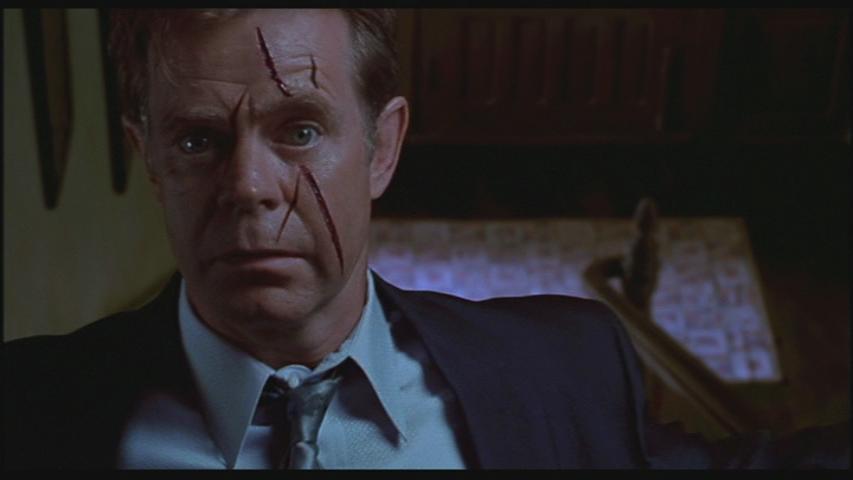
Within the uncanny valley that is Psycho ’98, the camp performances are maybe my favorite part. This lucid dream is a winking hall of mirrors that reflects the complex relationships between art, the artist, and the audience. We are meant to be constantly analyzing just what the hell makes the original Psycho (or any art) what it is. When Psycho ’98 threatens to over-engage with the audience (through those iconic set pieces), Gus Van Sant inserts odd “new” frames (storm clouds, a masked woman, etc.) to once again distance the audience, to make us aware we are watching a movie, and to keep us in that lucid state. On the other hand, the remake delivers a colorful aesthetic, 90s anachronisms, and camp performances that are markedly different from the source material. On one hand, we get that infamous shot-for-shot reverence, along with iconic set pieces and music that feels like we’ve seen it all before.

This strange viewing experience is a result of the contrast between the viewer’s extensive familiarity with the original film combined with all that is unfamiliar in this version. It constantly keeps you aware you are watching a movie, never letting you “lose yourself” in the film.

To me, Psycho ’98 is a wonderfully hypnotic lucid dream. So I’m grateful for this forum to explain why this controversial remake keeps me coming back to the (colorized) Bates Motel. When I posted about my love for the 1998 Psycho remake on social media, I got some sincerely curious requests to explain my admiration for this wildly unpopular film. More substantive than it gets credit for, 1998’s “Psycho” both emulates and subverts its source material - a lucid dream unlike anything I’ve experienced.


 0 kommentar(er)
0 kommentar(er)
